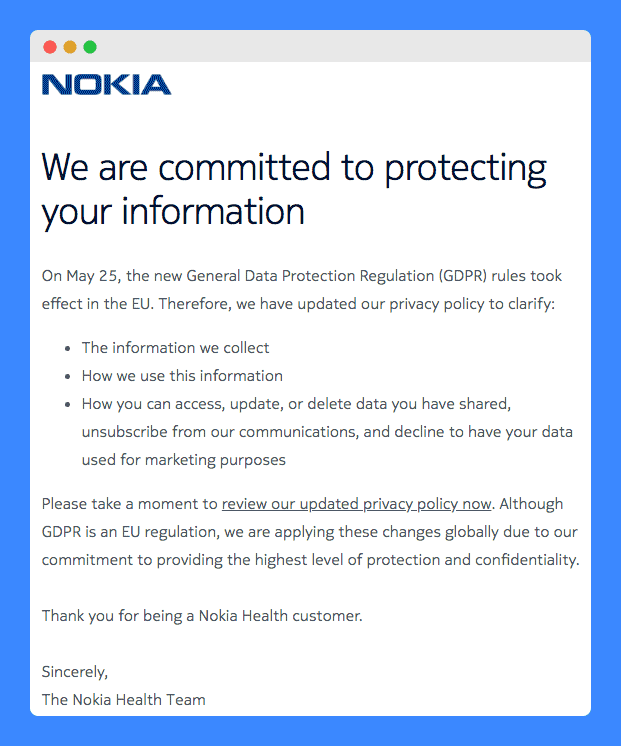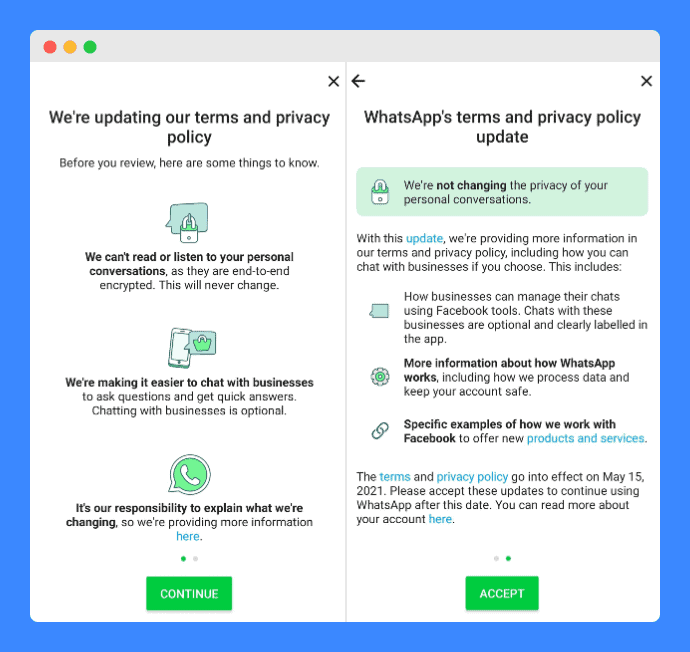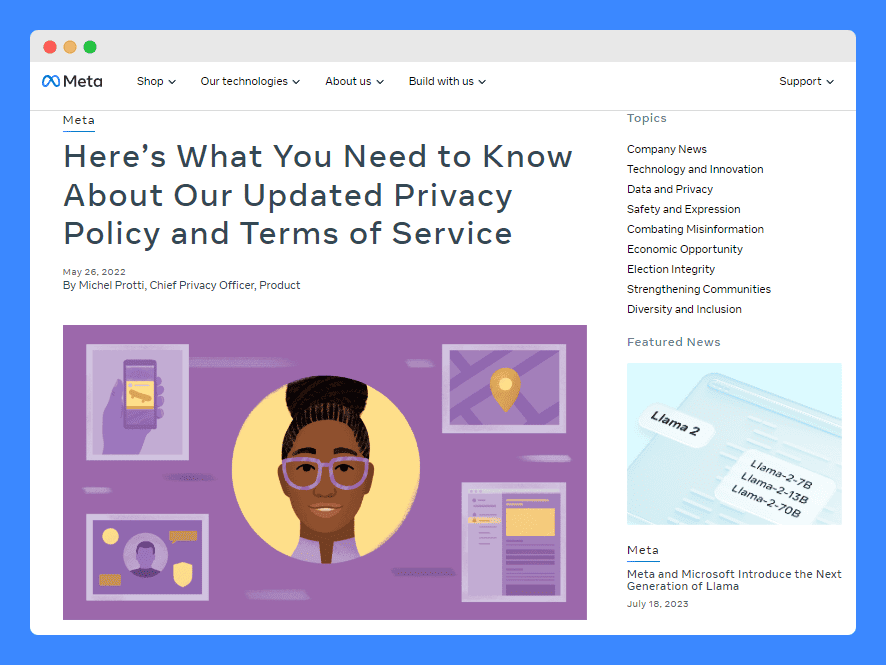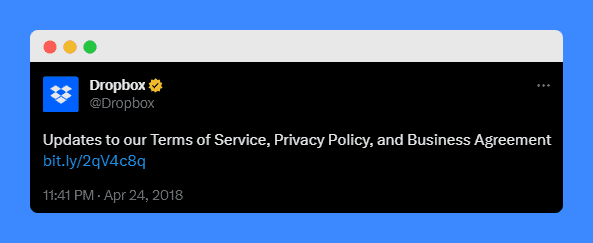So, you’re running an online business? Bet you didn’t think it’d involve as many late-night dates with your privacy policy as it has, am I right?
But here’s the deal – just like us, our privacy policies need a little tender loving care to stay in top shape. They are like the legal version of a Swiss Army knife for your business, and just like that knife, they need a bit of maintenance now and then.
They’ve got to stay sharp, up-to-date, and ready to tackle anything – think GDPR, CCPA, or any other acronym that sends shivers down your spine.
With that said, let’s make that jargon-packed beast of a document work for you and explain you need to review and update the privacy policy on your site or app on a regular basis.
- Regularly updating your privacy policy is critical for legal compliance, reflecting current business practices, and meeting evolving consumer expectations on privacy.
- When updating a privacy policy, it’s important to use clear, easily understood language, communicate changes promptly, explain reasons behind updates, and ensure legal compliance.
- Failing to notify users about privacy policy changes can result in a loss of trust, potential legal consequences, and user backlash. Effective communication methods are essential.
Table of Contents
PRO TIP: Take the hassle of writing your own privacy policy away with our privacy policy generator trusted by over 200,000 businesses. It’ll save you hours of work and possible costly legal mistakes.
Why Should You Update Your Privacy Policy?
Updating your privacy policy is a critical aspect of managing an online business and maintaining trust with your users. Some of the common reasons include the following:
- Laws and regulations are continuously evolving. Global and regional regulations like GDPR, CCPA, and LGPD require businesses to maintain up-to-date privacy policies. Not updating your policy could potentially lead to legal issues and hefty fines.
- Businesses grow and change, including their practices regarding data collection, storage, and sharing. An outdated policy may not accurately reflect your current data-handling practices.
- Consumer expectations are increasingly geared toward privacy and transparency. Users value their privacy and want to know how their data is being used. By regularly updating your privacy policy, you can ensure transparency, foster trust with your users, and enhance your business’s reputation.
In short, regularly updating your privacy policy is not just a legal obligation, but it’s also a vital trust-building tool and an important part of your overall business strategy.
Can Privacy Policy Be Changed?
Absolutely, a privacy policy can be modified at any time. But it’s not a free-for-all – there are considerations and limitations to bear in mind.
Often, companies reserve the right to alter their privacy policies to accommodate changes in laws, business practices, or technologies. However, modifications must respect legal constraints based on your business’s location and where your customers live.
Transparency is essential when changing your policy. In many regions, notifying your users about significant changes isn’t just best practice – it’s mandatory.
Moreover, your users need to have the chance to review the new terms and decide if they even wish to continue using your services.
Can You Change Your Privacy Policy Unilaterally?
The straight answer is yes, you can unilaterally change your privacy policy. However, this doesn’t mean changes should be implemented in the dark, away from the gaze of your users.
Getting through this process well is important for building trust with your users and keeping a strong relationship with them.
While the ability to change or update your privacy policy is within your company’s rights, this power needs to be exercised responsibly and ethically. The cornerstone here is transparency.
Your users should never feel like they’re left in the dark about how their data is being used. So, any changes to the privacy policy should be clearly communicated to them.
Best Practices for Updating Your Privacy Policy
When it’s time to update your privacy policy, a careful and informed approach is key. Here are some best practices to guide you through the process.

Make Updates Clear and Concise
When it’s time to revise your privacy policy, it’s essential that the changes you implement are both clear and easily understandable. Your users aren’t expected to be legal experts so complex terminology should be avoided whenever possible.
PRO TIP: Strive to draft updates in a way that anyone can comprehend, irrespective of their background knowledge about privacy policies.
This means using plain language, short sentences, and explanatory examples where necessary. If users can understand these changes without trouble, it enhances their trust and engagement with your services.
Communicate Changes Effectively
Your commitment to transparency as a business is reflected by how promptly and clearly you communicate changes in your privacy policy to your users.
You can make this communication through various channels like sending an email, posting a notification on your website, or employing any other method that ensures the information reaches all users.
Whichever method you choose, the key is to inform users as soon as possible, providing them with ample opportunity to understand and react to these changes.
Explain the Reasons
Taking the initiative to explain why you’re updating your privacy policy not only increases transparency but also builds trust with your users.
This could involve elucidating changes in relevant laws, introducing new product features, or responding to user feedback. It can also help users to feel more comfortable with the changes, knowing they aren’t arbitrary but rooted in necessity.
PRO TIP: By letting your users understand the reasons behind the updates or modifications, you give them a sense of inclusion and respect.
Ensure Legal Compliance
Compliance with current laws and regulations is an essential element when you’re updating your privacy policy. Privacy laws are frequently evolving, and failure to adhere to them can lead to hefty fines and potentially damage your business’s reputation.
Needless to say, it’s important that you stay informed about changes to legislation and ensure your policy is always in line with these laws. Consider using privacy experts to keep your policy up-to-date and legally sound.
Regularly Review Your Policy
Instead of only revisiting your privacy policy when significant changes occur, adopt a habit of regular reviews. This proactive approach allows you to ensure that your policy continually mirrors your actual practices and aligns with any new or adjusted regulations.
Reviewing your policy on a regular basis can also help you spot any potential areas of improvement and keep your privacy policy at its best. Remember, an accurate, up-to-date policy can be an essential tool for fostering trust and clear communication with your users.
PRO TIP: Updating your privacy policy isn’t just about making changes. It’s about being transparent, communicative, and compliant while keeping your users informed and engaged.
Why You Must Send a Privacy Policy Update Notice
Sending out a privacy policy update notice is an essential practice for you as an online business owner, and here’s why.
- Legal Compliance: In many places around the globe, it’s a legal requirement to inform your users about significant policy changes. Falling foul of regulations like the General Data Protection Regulation can cost you dearly in fines
- Avoiding Backlash: Unannounced changes to your policy can trigger a backlash from your users. Transparency helps you maintain their trust and protect your business’s reputation.
- Building Trust: Transparency is important in showing your respect for users’ data rights. By keeping them informed, you’re sending a clear message: “Your privacy matters to us, and we’re dedicated to protecting it.”
Consequences of Not Notifying Your Users
Neglecting to notify your users about your privacy policy changes can lead to serious consequences. Let’s look at some of the potential outcomes you may face if you fail to do your part.
Loss of Trust
One of the major potential repercussions of failing to inform users about changes to your privacy policy is the loss of trust.
Privacy is a significant concern for users today, and any alterations made to how you handle their data can come off as a violation of that trust if not properly communicated.
This can lead to user dissatisfaction, attrition, and negative word-of-mouth that could damage your brand.
Therefore, maintaining open and transparent communication is paramount to sustaining user trust and loyalty.
Legal Consequences
Depending on the jurisdiction you operate in, failing to notify users about changes to your privacy policy could lead to violations of specific privacy laws, such as GDPR or CCPA.
These laws carry stringent penalties for non-compliance, which often involve substantial fines. But the repercussions aren’t only financial.
Non-compliance can tarnish your business reputation, causing potential harm that extends far beyond the immediate legal penalties.
PRO TIP: Notifying users of any changes is needed not only for maintaining customer trust but also for ensuring legal compliance.
Backlash From Users
Real-world examples, like those of tech giants Facebook and Google, underscore the importance of communicating policy changes to users.
These companies have faced extensive backlash and have been subject to enormous fines for not adequately informing users about changes to their privacy policies.
These instances serve as powerful reminders of the negative consequences of non-disclosure and highlight the importance of transparency when it comes to updating privacy policies.
It’s a lesson in the vital role communication plays in upholding trust and avoiding costly legal ramifications.
ALSO READ: Privacy Policy Template and a List of Required Clauses
How to Send a Privacy Policy Update Notice?
When updating your privacy policy, notifying your users accordingly is a much-needed step. Below are some of the common methods to ensure your message gets across successfully.
Email Notifications

Perhaps the most common approach is to send an email to your users. It’s direct, personal, and allows for detailed explanations. Make sure the email is clear, and concise, and highlights the major changes to your privacy policy.
Website Pop-ups

A pop-up on your website is another effective strategy. It’s hard to miss and can reach all users visiting your website. Make sure the pop-up is obvious but doesn’t get in the way of your user’s experience.
App Push Notifications

If you have a mobile app, push notifications can be a great way to communicate changes to your users. Keep the message short and direct, encouraging your users to learn more about the changes within the app or on your website.
Blog Post

Publishing a blog post is an excellent method to explain the rationale behind the changes and what they mean for your users. You can then link to this post in your email, pop-up, or push notification.
Social Media Announcement

Leverage your social media platforms to reach a wider audience. Ensure the message is tailored to the specific platform’s tone and style, and include a link to the updated policy.
PRO TIP: Choose the methods that best align with your business communication strategies and the preferences of your users. Always aim for clarity and transparency to maintain the trust of your users.
In summary, updating your privacy policy requires effective communication to ensure your users are informed about any changes.
Tailoring your message to fit each platform while ensuring clarity and transparency can also come in handy to make it easier for everybody.
Frequently Asked Questions
How often should I review and update my privacy policy?
While there’s no set rule, it’s a good practice to review your privacy policy at least annually or whenever there are significant changes in your business operations, data processing activities, or relevant laws and regulations.
Can a business change its privacy policy at will?
Yes, businesses have the right to change their privacy policies. However, these modifications must respect legal constraints and be clearly communicated to the users.
What are some best practices when updating a privacy policy?
Best practices include making clear and concise updates, effectively communicating changes, explaining the reasons behind changes, ensuring legal compliance, and regularly reviewing the policy.
Why is it necessary to send a privacy policy update notice to users?
Sending a privacy policy update notice is essential for legal compliance, avoiding user backlash, and building trust by demonstrating respect for users’ data rights.
How can a business effectively communicate changes to its privacy policy to its users?
Businesses can communicate privacy policy changes through methods like email notifications, website pop-ups, app push notifications, blog posts, and social media announcements.



